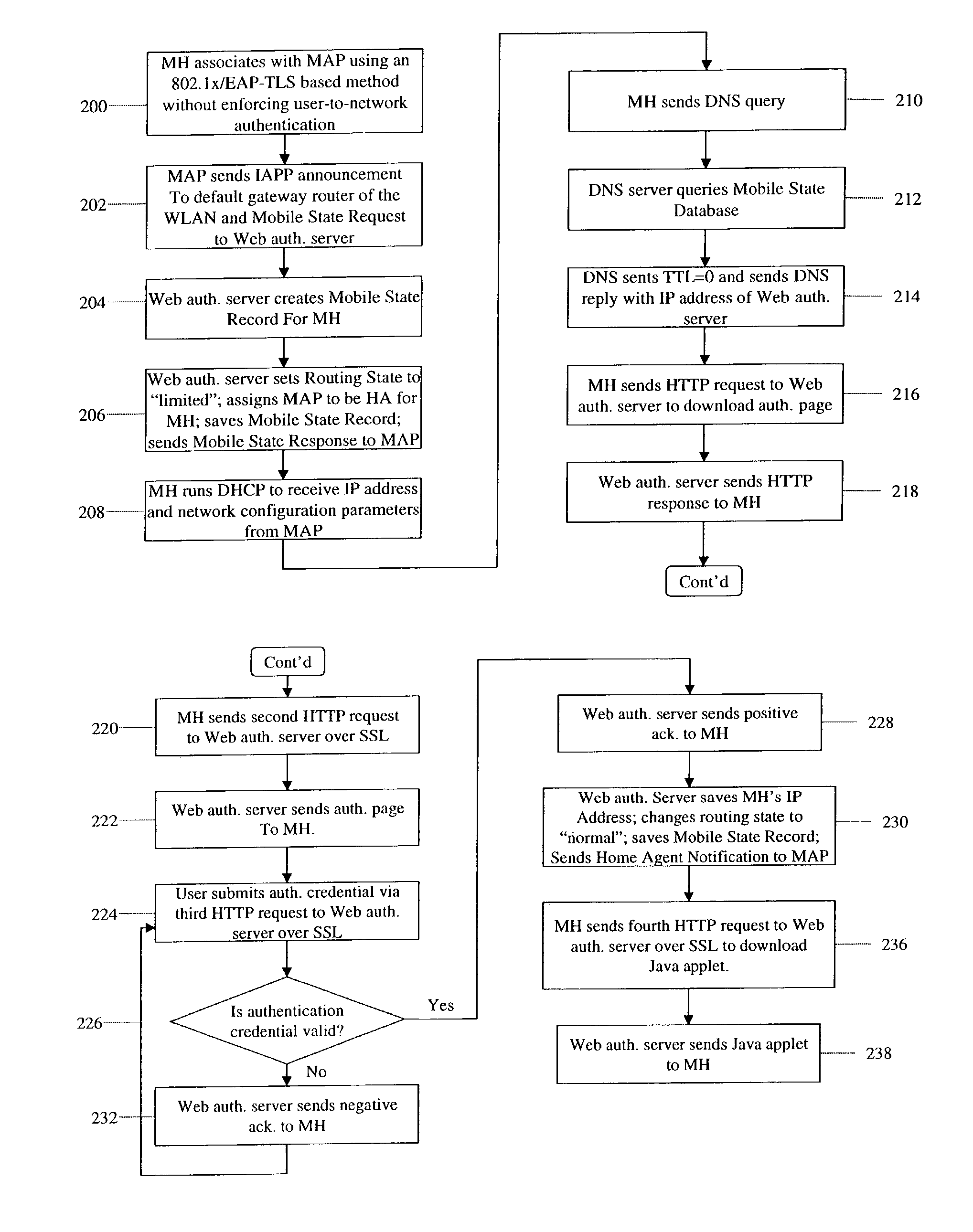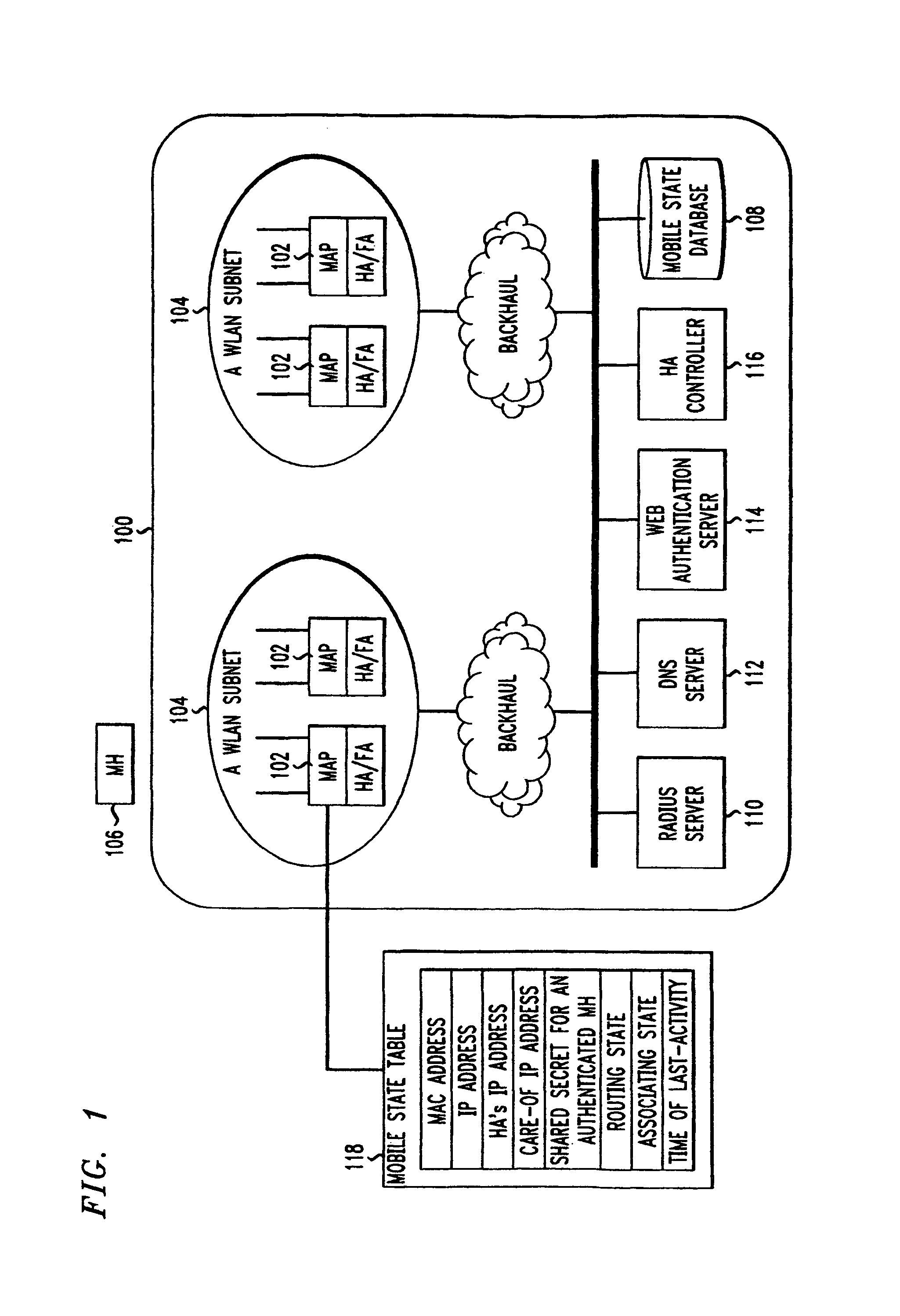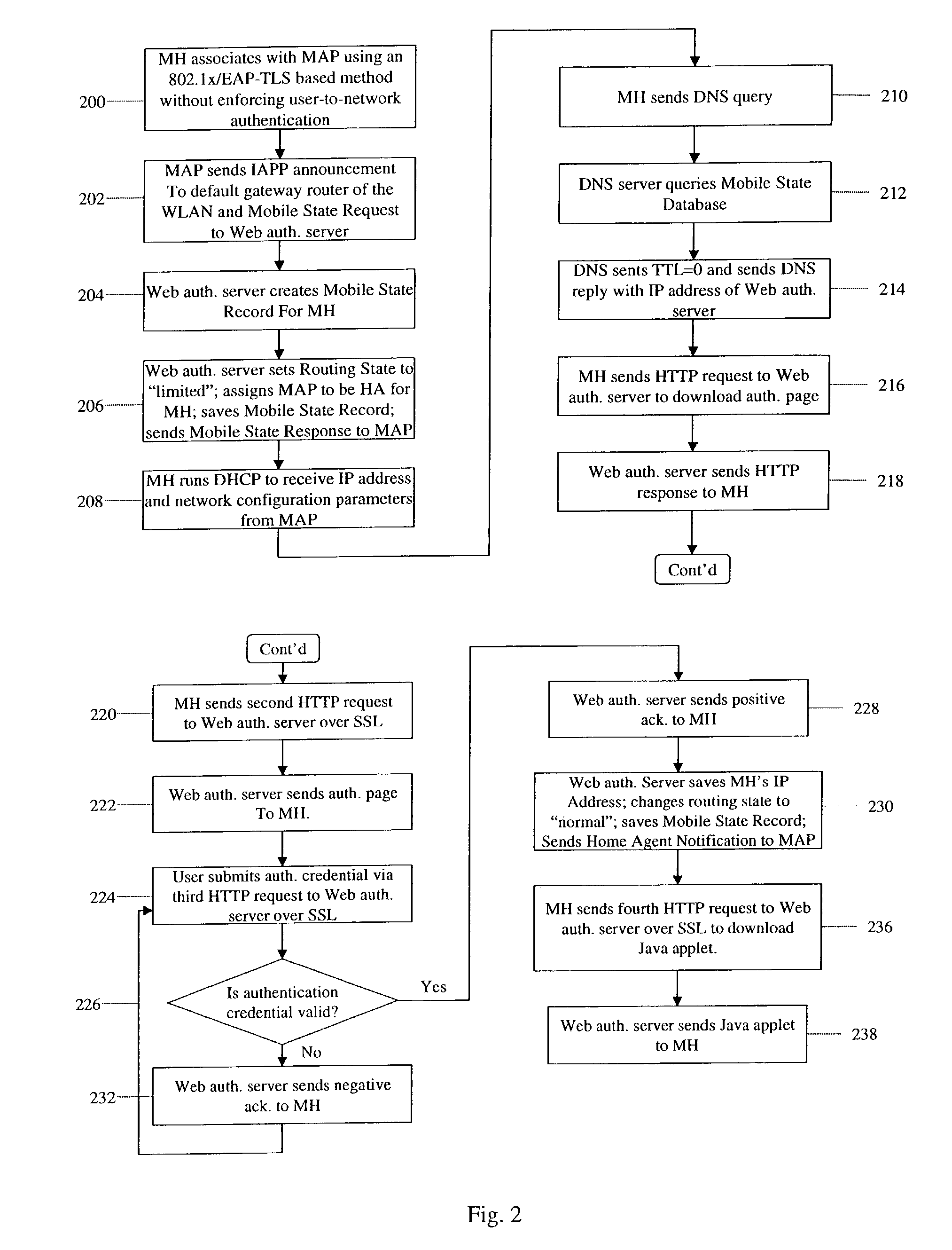Zero-configuration secure mobility networking technique with web-based authentication interface for large WLAN networks
a secure mobility and network authentication technology, applied in the field of mobile networking, can solve the problems of large number of wlan stations, high publicization of security flaws of wep, and iapp suffers scalability problems, and achieve the effect of facilitating network-to-user authentication
- Summary
- Abstract
- Description
- Claims
- Application Information
AI Technical Summary
Benefits of technology
Problems solved by technology
Method used
Image
Examples
Embodiment Construction
[0018]In accordance with the present invention, there is provided a zero-configuration secure mobility networking (ZCMN) technique for a WLAN network (i.e., a network consisting of many WLANs), which generally comprises a zero-configuration WLAN security method and a zero-configuration mobility method. The zero-configuration WLAN security method utilizes a WLAN authentication process that is split into a link-layer authentication process and a Web-based authentication process. The link-layer authentication process is based on EAP-TLS (Transport Layer Security) or EAP-TTLS-PAP (Tunneled Transport Layer Security—Password Authentication Protocol), an 802.1x-based authentication method using digital certificates. If EAP-TLS is used, the EAP-TLS authentication server is configured so as not to enforce user-to-network authentication, thus no distinctive account information needs to be pre-configured on mobile computers. If EAP-TTLS-PAP is used, the authentication server admits any usernam...
PUM
 Login to View More
Login to View More Abstract
Description
Claims
Application Information
 Login to View More
Login to View More - R&D
- Intellectual Property
- Life Sciences
- Materials
- Tech Scout
- Unparalleled Data Quality
- Higher Quality Content
- 60% Fewer Hallucinations
Browse by: Latest US Patents, China's latest patents, Technical Efficacy Thesaurus, Application Domain, Technology Topic, Popular Technical Reports.
© 2025 PatSnap. All rights reserved.Legal|Privacy policy|Modern Slavery Act Transparency Statement|Sitemap|About US| Contact US: help@patsnap.com



